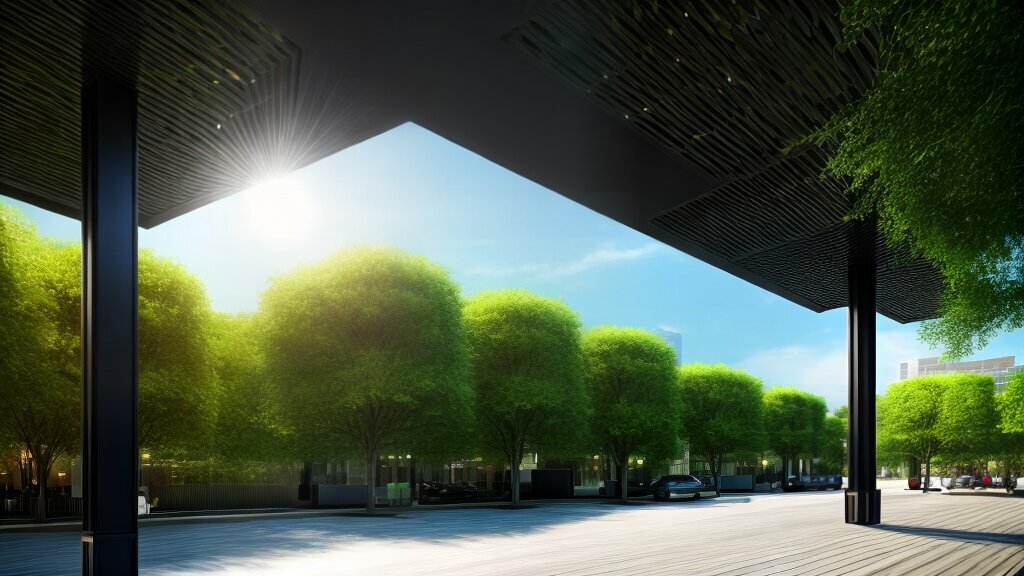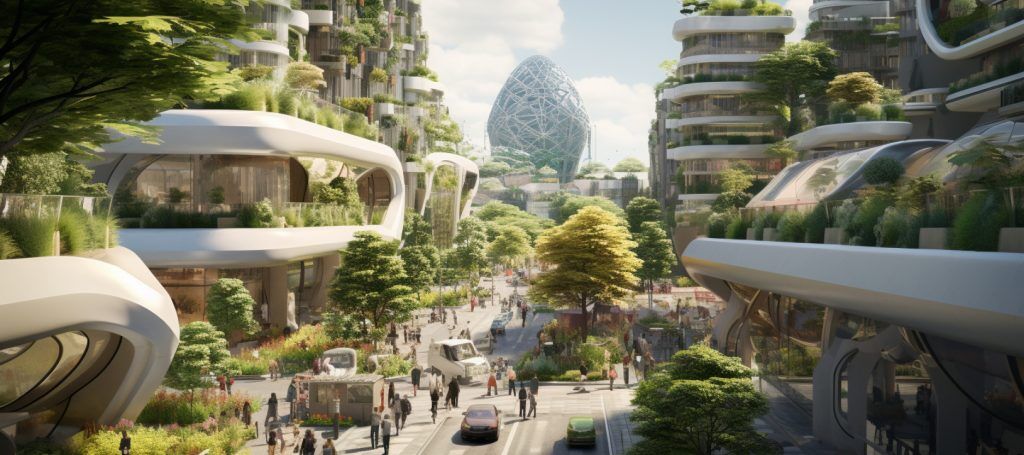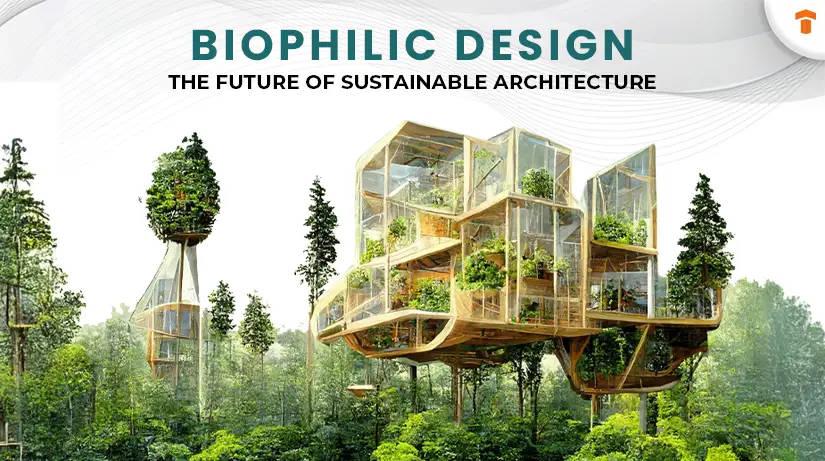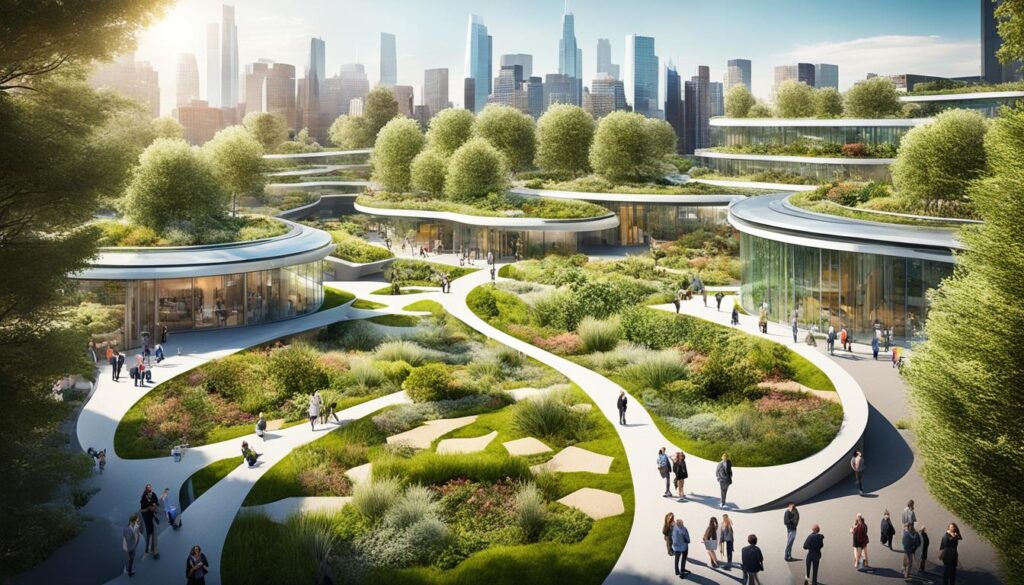Building Resilience with Biophilic Design Principles.
Biophilic design is not merely a trend; it represents a transformative approach that fosters a reconnection with nature within our constructed environments.
By incorporating natural elements into architectural designs, biophilic design enhances resilience, improves health, and promotes overall well-being while embracing principles of sustainable architecture and urban greenery.
This article examines the foundational principles of biophilic design, its significant physical and mental health benefits, and practical methods for integrating these concepts into buildings with an emphasis on ecological health and wellness design.
By embracing nature, one can create spaces that nurture both individuals and the planet.
What is Biophilic Design?
.jpg_00.jpeg)
Biophilic design represents an innovative approach that integrates natural elements into architecture and urban planning, thereby enhancing the connection between individuals and nature in accordance with principles of environmental psychology.
This design philosophy aims to create restorative environments that promote well-being by incorporating features such as natural light, indoor vegetation, and outdoor areas that facilitate mindfulness and tranquility.
By underscoring the significance of nature immersion, biophilic design seeks to enhance the user experience and foster emotional well-being, acknowledging the substantial impact that our relationship with the natural world has on our health and productivity.
Why is Biophilic Design Important for Building Resilience?
Biophilic design is integral to enhancing resilience by fostering a profound connection between individuals and their environments, supporting ecological design and sustainable materials. This approach promotes health and well-being while addressing pressing challenges such as climate change.
By incorporating natural elements and sustainable materials, biophilic design not only enhances the aesthetic quality of spaces but also facilitates climate adaptability and reduces ecological impacts, thereby improving community resilience.
Furthermore, this design philosophy encourages the adaptive reuse of buildings, supports biodiversity conservation, and employs nature-based solutions to mitigate the urban heat island effect and improve air quality.
How Does Biophilic Design Improve Health and Well-being?
Biophilic design plays a crucial role in enhancing health and well-being by creating environments that promote a connection with nature and facilitate restorative experiences, which are essential for mental and physical health, contributing to cognitive benefits and stress reduction.
Research in environmental psychology underscores the beneficial effects of natural elements, including plants, water features, daylighting, and natural light, on stress reduction, productivity, and emotional well-being.
By integrating biophilic principles, architects and designers can develop spaces that not only encourage sensory engagement and tranquility but also foster social interaction within community spaces, enhancing place attachment and ecological awareness.
What are the Physical Benefits of Biophilic Design?
The physical benefits of biophilic design are extensive, encompassing enhancements in air quality, energy efficiency, and the incorporation of natural light, all of which contribute to the creation of healthier living environments and promote nature-centered design. By employing sustainable architecture and eco-friendly practices, biophilic design not only improves the aesthetic appeal of spaces but also promotes a more efficient utilization of resources.
The integration of natural elements within buildings leads to enhanced indoor climates, which can have a direct impact on the physical well-being of occupants.
For example, the implementation of natural ventilation systems can significantly decrease the accumulation of indoor pollutants, resulting in cleaner, fresher air that supports better respiratory health. Additionally, maximizing natural light through strategically positioned windows and skylights not only reduces reliance on artificial lighting but also aligns with circadian rhythms, thereby improving mood and productivity.
These components of biophilic design foster environments that are visually appealing and conducive to the physical and mental well-being of individuals, clearly demonstrating the connection between nature and overall health while aligning with holistic design and human-centric design.
What are the Mental Benefits of Biophilic Design?
Biophilic design provides significant mental health benefits by creating environments that promote mindfulness, emotional well-being, and restorative experiences, thereby reducing stress and anxiety levels.
The incorporation of nature-inspired elements and therapeutic landscapes establishes spaces that facilitate relaxation and enhance mental clarity, supporting psychological well-being and nature therapy. This connection to nature is recognized for its ability to improve cognitive function and increase productivity, underscoring the importance of human-nature interaction in our constructed environments.
These meticulously designed spaces encourage individuals to engage with their surroundings, offering opportunities for reflection and tranquility that are often absent in urban settings.
By integrating features such as natural lighting, water elements, and vegetation, biophilic design not only fosters a sense of belonging but also aids individuals in regaining focus and creativity, contributing to the experiential design and sensory design.
Therapeutic landscapes function as serene retreats, inviting users to immerse themselves in the calming influence of nature, which can uplift mood and bolster resilience in the face of everyday challenges.
What are the Principles of Biophilic Design?
The principles of biophilic design focus on the creation of environments that enhance the connection to nature and promote well-being through the thoughtful integration of natural elements, sensory experiences, and an appreciation for cultural identities, advocating for adaptive reuse and immersive environments.
These design principles emphasize a human-centered approach, aiming to deliver emotional and psychological benefits by incorporating features such as visual connections to the outdoors, the use of natural materials, and fostering community engagement.
By adopting these principles, architects can develop spaces that support biodiversity and contribute to a sustainable future.
1. Incorporating Natural Elements
.jpg_01.jpeg)
Incorporating natural elements into architectural and urban design is essential to biophilic design, as it significantly enhances user experience and fosters a deeper connection with nature. Elements such as indoor plants, landscaping, and water features contribute to the creation of immersive environments that support biodiversity and promote ecological balance.
This approach not only enhances aesthetic appeal but also plays a critical role in improving air quality and overall well-being.
By strategically integrating green roofs, living walls, and native plant gardens, designers can establish habitats that attract pollinators and other beneficial wildlife. These initiatives not only mitigate the urban heat island effect but also contribute to a healthier ecosystem, supporting urban biodiversity and ecological restoration.
Furthermore, incorporating natural light through large windows or skylights enhances the sensory experience, leading to spaces that are both inviting and restorative.
These strategies reflect a growing recognition of the vital role that nature plays in enhancing quality of life, ultimately resulting in urban environments that are both aesthetically pleasing and sustainable.
2. Maximizing Natural Light and Views
Maximizing natural light and views is a fundamental principle of biophilic design that significantly contributes to the health benefits of built environments. By enhancing visual connections with the outdoors, spaces become more inviting and can positively influence occupants’ mood and productivity.
The strategic placement of windows and skylights ensures that individuals experience abundant natural light, which is essential for maintaining circadian rhythms, promoting overall well-being, and enhancing visual connection to the outdoors.
Incorporating larger windows or glass doors not only floods interiors with sunlight but also facilitates a seamless transition between indoor and outdoor spaces. For example, residential projects featuring floor-to-ceiling windows offer breathtaking views, fostering a more harmonious relationship with nature.
Research indicates that access to natural light can reduce stress levels and enhance cognitive function, highlighting the importance of thoughtful design and its role in nature immersion and ambient nature.
Successful implementation of these principles can be observed in modern office buildings that incorporate open atriums and expansive glass facades, enhancing employees’ connection to the outside world and ultimately leading to increased satisfaction and productivity.
3. Creating a Sense of Place
Creating a sense of place is essential in biophilic design, as it promotes community engagement and reflects cultural identity through deliberate place-making and nature-based solutions. By incorporating local materials, historical context, and community spaces into the design, occupants are able to establish a stronger connection to their environment.
This principle enhances social interaction and reinforces the emotional bonds individuals have with their surroundings.
When design elements integrate the unique narratives and traditions of local communities, they not only enhance the aesthetic appeal of a space but also resonate deeply with its inhabitants. For example, a park that features native trees and artworks celebrating local heritage can encourage residents to engage more profoundly with their environment, transforming it into a vibrant hub for cultural expression.
The inclusion of features such as community gardens promotes sustainability and fosters collaboration among neighbors, thereby enriching the social fabric of the community.
Ultimately, biophilic design acts as a bridge that connects nature, culture, and community, encapsulating the essence of a genuinely lived experience, fostering community resilience and ecological sustainability.
4. Incorporating Patterns and Textures from Nature
Incorporating patterns and textures derived from nature is a fundamental principle of biophilic design, as it enhances the aesthetic quality of spaces while fostering a deeper connection to the natural environment. By utilizing nature-inspired motifs and materials that reflect natural forms, designers can create environments that are both visually appealing and conducive to an enriched sensory experience, aligning with principles of experiential and immersive design.
This approach not only beautifies the space but also contributes positively to the emotional well-being of its occupants.
Imagery such as leaves, waves, or granular textures found in the earth can be thoughtfully integrated into various elements, including wall coverings, flooring, and furnishings. For example, wooden panels featuring rich grain patterns can evoke the ambiance of a forest, while textiles that mirror the soft, undulating forms of sand dunes can introduce warmth and comfort into interior spaces. Such nature-based solutions promote ecological health and contribute to the overall aesthetic appeal.
These biophilic elements not only foster a sense of tranquility but also elicit positive emotional responses, such as comfort and relaxation. By meticulously integrating these natural patterns and textures, spaces can be transformed into restorative environments, promoting a calming atmosphere that significantly enhances the overall experience and psychological well-being of the occupants.
5. Providing Opportunities for Nature Interaction
Providing opportunities for interaction with nature is a fundamental component of biophilic design, encouraging individuals to engage with their surroundings and experience the therapeutic benefits of nature. This can be accomplished through the development of outdoor spaces, community gardens, and other interactive elements that facilitate direct contact with the natural environment, fostering a deeper nature connection.
By promoting these interactions, biophilic design enhances psychological well-being, reduces stress, and contributes to overall health and wellness, embodying principles of environmental psychology and cognitive benefits.
The incorporation of elements such as green walls, water features, and natural light not only enhances the visual appeal of spaces but also fosters a deeper connection with the environment, highlighting the importance of sensory experiences and visual connection in design.
For instance, urban parks and community gardens serve as accessible venues for social interaction and recreational activities, promoting both relaxation and active engagement.
Nature trails and sensory gardens can provide therapeutic experiences, addressing diverse needs and encouraging mindfulness.
As individuals spend more time in these natural settings, they may experience improvements in mood, increased creativity, and a heightened sense of belonging. This illustrates the multifaceted advantages that well-considered biophilic design can bring to everyday life.
How Can Biophilic Design be Incorporated into Buildings?
Incorporating biophilic design into buildings encompasses a variety of strategies aimed at enhancing the connection to nature, improving overall well-being, and promoting sustainability through sustainable architecture and nature integration.
This may involve the implementation of green roofs and living walls, which serve to provide habitats for biodiversity and enhance air quality, in addition to establishing indoor gardens that encourage mindfulness and tranquility, contributing to ecological design and habitat diversity.
By adopting sustainable materials and design practices, architects can create environments that support health and resilience.
1. Green Roofs and Walls
.jpg_10.jpeg)
Green roofs and living walls are key components of biophilic design, serving not only to enhance the aesthetic appeal of buildings but also to make significant contributions to biodiversity and climate resilience. By establishing green spaces on rooftops and vertical surfaces, these features create habitats for a variety of plant and animal species, while simultaneously improving air quality and mitigating the urban heat island effect, showcasing the principles of green infrastructure and urban greenery.
These innovative installations offer a wide range of benefits, contributing to the sustainability of urban environments. They assist in regulating building temperatures, thereby enhancing energy efficiency through passive design, which can result in reduced heating and cooling costs for both residents and businesses.
The incorporation of plants in densely populated areas fosters increased biodiversity, which is essential for supporting pollinator populations and other wildlife.
From a visual perspective, green roofs and walls transform grey urban landscapes into vibrant ecosystems, thereby promoting mental well-being among city inhabitants. In summary, these solutions not only facilitate ecological balance but also enhance the overall quality of urban living.
2. Indoor Gardens and Living Walls
Indoor gardens and living walls represent effective methods for incorporating biophilic design into interior spaces, thereby enhancing the connection to nature and promoting a variety of health benefits. These green installations not only elevate the aesthetic appeal of a space but also contribute to improved air quality, reduced stress levels, and the creation of a calming environment that fosters productivity and overall well-being, aligning with wellness design and nature immersion.
Integrating these living elements into residential and commercial settings provides individuals with the opportunity to experience the soothing effects of greenery on a daily basis. Such environments have been demonstrated to enhance creativity, elevate mood, and improve concentration, which are essential factors for both personal and professional development, supporting the concept of design for health and emotional well-being.
Furthermore, indoor gardens can serve educational purposes by fostering an appreciation for nature among urban residents who may lack direct access to outdoor greenery. As individuals engage in nurturing plants within their immediate surroundings, they often report feelings of accomplishment and heightened mindfulness.
In conclusion, these features not only enrich physical spaces but also promote emotional well-being, underscoring the importance of integrating nature into our modern environments.
3. Natural Materials and Finishes
The incorporation of natural materials and finishes is a fundamental aspect of biophilic design, as it underscores sustainability while enhancing the aesthetic quality of various spaces. Materials such as wood, stone, and clay not only provide tactile experiences but also instill a sense of warmth and connection to the earth. This aligns with design principles that prioritize human-centered approaches, ecological awareness, and emotional well-being.
Integrating these elements into architectural design cultivates a tranquil environment that resonates with occupants, promoting a deeper psychological engagement with their surroundings. The rich textures and tones of natural materials can evoke feelings of calm and serenity, rendering spaces more conducive to relaxation and productivity, enhancing the human-nature relationship.
Furthermore, the visual appeal of organic materials enhances the overall ambiance, facilitating a harmonious coexistence between built environments and nature.
By prioritizing these considerations, architects and designers can create spaces that fulfill functional requirements while also nurturing emotional health and promoting a sustainable lifestyle, contributing to reduced ecological footprint and green building practices.
4. Water Features
Water features represent a crucial element of biophilic design, providing not only aesthetic enhancement but also a variety of health benefits through sensory engagement and the promotion of tranquility, embodying principles of sensory design and ambient nature.
The sound of flowing water, coupled with its visual appeal, can facilitate relaxation and contribute to the overall well-being of individuals within a space, thereby creating restorative environments that strengthen the connection to nature.
Incorporating such elements into both residential and commercial settings cultivates a calming atmosphere that has the potential to reduce stress and anxiety. These natural soundscapes promote mindfulness and can enhance focus, thereby supporting individuals in engaging in creative activities or simply unwinding.
Water features can also act as focal points that attract attention and encourage social interaction, thereby enhancing community bonds. By integrating these soothing components into design, spaces become more inviting and harmonious, fostering not only physical relaxation but also emotional balance for all who experience them.
5. Natural Light and Ventilation
Maximizing natural light and ventilation is a fundamental principle in biophilic design, as it significantly enhances energy efficiency and promotes the health and well-being of occupants. By strategically positioning windows, skylights, and open spaces, buildings can effectively harness daylight, thereby reducing reliance on artificial lighting and improving indoor air quality, emphasizing daylighting and natural lighting techniques.
This approach not only cultivates a more inviting and pleasant environment but also fosters mental clarity and productivity. Research indicates that offices with abundant daylight can enhance employee performance and satisfaction, while residences that prioritize fresh air circulation contribute to a reduction in respiratory issues.
Effective design strategies include the incorporation of operable windows to facilitate cross-ventilation and the use of light tubes to direct sunlight into deeper areas of a building. Such strategies ensure that occupants can experience the revitalizing benefits of nature.
By seamlessly integrating these elements, spaces become healthier and more energizing, leading to improved overall outcomes for all individuals involved, supporting climate adaptation and community resilience through adaptive reuse.
Frequently Asked Questions
What is biophilic design?
.jpg_11.jpeg)
Biophilic design is an approach to architecture and interior design that incorporates elements of nature into the built environment. It aims to reconnect people with the natural world through the use of natural materials, light, and vegetation, promoting wellness and environmental sustainability.
How does biophilic design contribute to building resilience and community engagement?
Biophilic design, a cornerstone of sustainable architecture, can help to build resilience by promoting physical and mental health, reducing stress, and increasing productivity. By bringing elements of nature into the built environment, it can also help to improve air and water quality, reduce energy consumption, and enhance psychological well-being.
What are some examples of biophilic design principles?
Examples of biophilic design principles include maximizing natural light, incorporating natural materials such as wood and stone, and incorporating views of nature. Other principles include using natural ventilation, incorporating indoor plants, creating community spaces, enhancing sensory experiences, and ensuring a visual connection with nature.
How can biophilic design benefit the environment?
Biophilic design can benefit the environment by reducing the carbon footprint of buildings through the use of natural ventilation, natural lighting, and green roofs. It contributes to environmental sustainability by preserving natural habitats and promoting biodiversity, incorporating ecological design strategies, and integrating urban greenery into the design.
Are there any potential challenges with implementing biophilic design principles?
Yes, there can be challenges with implementing biophilic design, such as the availability and cost of natural materials, the need for specialized expertise, and potential conflicts with building codes and regulations. However, these challenges can be overcome with proper planning, adaptive reuse, and collaboration with experts in the field of landscape architecture and urban design.
Can biophilic design be incorporated into existing buildings?
Yes, biophilic design principles can be incorporated into existing buildings through renovations and retrofits. This can include adding indoor plants, improving natural lighting, incorporating natural materials, and introducing biophilic features such as living walls and water features. It may also involve redesigning spaces to create a stronger connection with nature, enhancing community engagement, and fostering human-nature relationships.

I’m Bruno, an architect with a deep passion for Biophilic Design in Urban Architecture. Throughout my career, I’ve focused on integrating natural elements into urban planning, and I created this site to share my insights and foster a deeper understanding of how biophilic principles can significantly enhance urban living. Dedicated to sustainable development, I continually explore innovative design solutions that promote both environmental and human well-being in city landscapes.














Publicar comentário